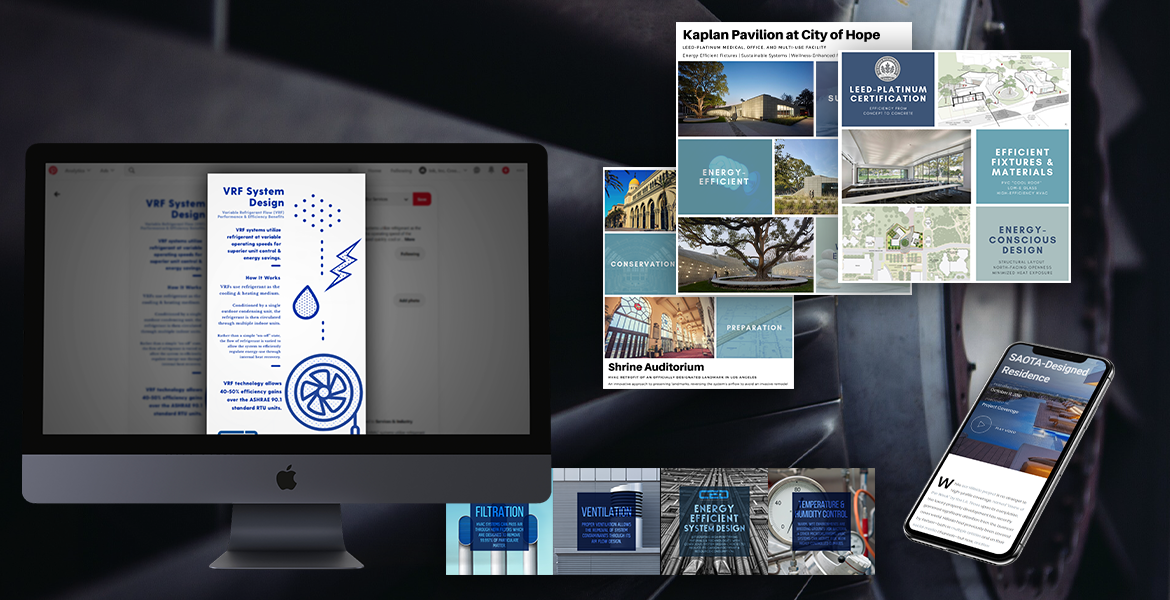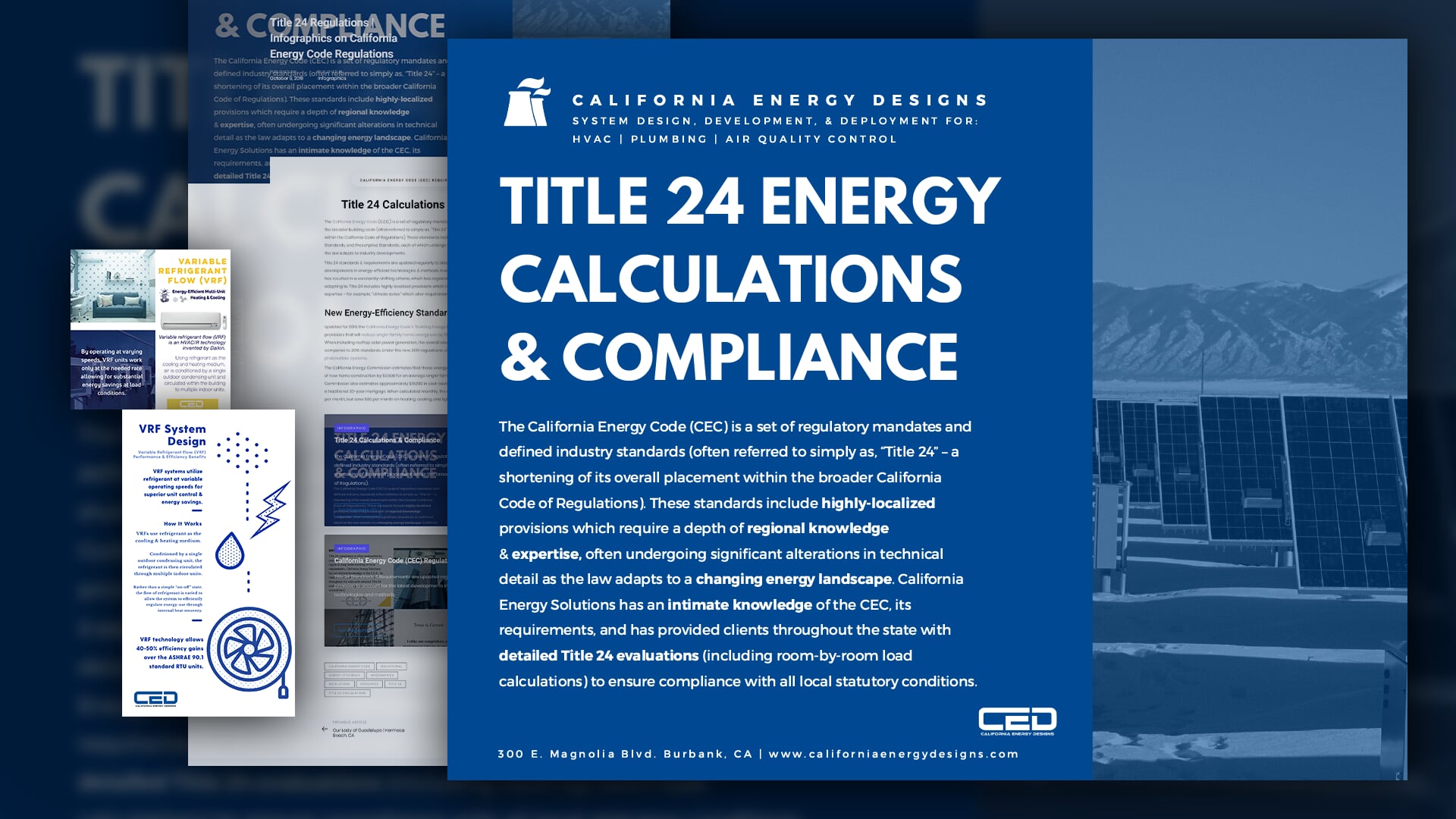July 6, 2020 - Brittany Garlin
#TransformationTuesday with Ink, Inc. Creative Group on The Digital Experience Design for California Energy
Gone are those days when having a skeleton website and filling it with shallow articles stuffed with keywords worked. Today, a carefully designed website is central to succeeding online. Website design matters now more than ever, and it is one of the essentials of a good digital marketing strategy.
We were able to connect with Ink, Inc. Creative Group on the digital experience design for California Energy Designs – an engineering firm providing system-design services and product deployment solutions, specializing in the development of HVAC, Plumbing, and Air-Quality Control Systems.
Ink, Inc. Creative Group is a full-service marketing agency in Brooklyn, NY; they operate at the intersection of creativity and strategy to produce meaningful growth for clients through actionable campaigns and holistically designed digital interaction points. With a content-driven approach, their mission is to forge long-term customer bonds that benefit both parties, developing meaningful connections between impactful brands and their target audience. From SMB organizations to large-scale enterprises, they help their clients by developing brand identities, digital experiences, and campaign assets that communicate clearly, achieve marketing goals, and captivate users visually.
Let’s dive into some of the insights they provided us on the digital experience design for California Energy Designs.
Q1: Tell us about this project.
This project incorporated strategic rebranding, digital experience development, and content marketing initiatives for a B2B client, California Energy Designs. For the LA-based mechanical engineering firm, we furnished updated brand assets including a new modern logo, a fully-redesigned company website, and both physical & digital content (including a media kit, infographics, and social media assets).
The client operated in a high-end segment of its specialized technical industry, providing system-design services for HVAC, Plumbing, and Air-Quality Control Systems. We felt it was crucial for California Energy Designs to present an extremely polished brand experience in order to compete with its larger enterprise peers. Given the discerning nature of its B2B customer-base, we adopted a holistic strategic overhaul of the company’s digital presence.
Q2: What was the biggest challenge with this project?
As with any heavily specialized company, the largest challenge is appealing to a very narrow, but meticulously discerning, B2B customer-base. This makes it crucial to avoid a “wide-net” approach of trying to target a very broad audience—risking the loss of core prospects to overly-generic content that appeals mostly to unqualified leads. Instead, it is important to focus intensely on your specific buyer personas, driving strong appeal to the few, rather than mild appeal to the many. In both content marketing and website design, we aimed to highlight the firm’s in-depth expertise by focusing on topics that were often inaccessible to unqualified prospects but that would strongly resonate with the client’s core customer base.

Q3: How do you simplify a brand image when dealing with a business that touches on multiple sub-sectors in the industry?
As the company provided services to both ultra-luxury residential estates (with clients like the Royal House of Saud, Seth MacFarlane, and Tom Brady) and industrial/commercial facilities (including Boeing, Amgen, and Cigna), it was important for us to maintain brand consistency without alienating either of the diverse customer-segments. To accomplish this, we developed a central messaging strategy and infused unique elements demonstrating sector-specific expertise alongside this core architecture. This was aided by specific web pages developed for each segment and content “vignettes” that highlighted the firm’s in-depth knowledge of each sector.
Our core vision was to highlight the innovative approach and creative perspective that the team at California Energy Designs employs in their work. As we learned more about their business, we were impressed by the unique problem-solving involved in their line of work. This “outside the box” framework then bolstered the integrity of expertise claims, helping to reinforce the brand narrative. By establishing California Energy Designs as a “thought leader” in their industry through valuable inbound content, credibility was enhanced across each of the multiple sub-sectors.
Q4: What are some key signs that a brand may have inconsistent branding?
There are a lot of small factors that can indicate disorganization or inconsistency in digital branding. Simple things like using the same logo, company description, and username (or “handle”) across digital channels are often overlooked by some companies, particularly small businesses and agile startups. This usually is the result of a “piecemeal” approach to brand and digital presence development.
It’s important to consider your brand holistically and not in individual “silos.” Instead of updating your company LinkedIn page to prepare for an upcoming job listing, consider making the changes uniformly across all your social channels. Oftentimes, these situations are what result in inconsistencies, with companies only addressing the immediate concern and failing to follow-up elsewhere.
Q5: How do you measure brand image online?
There are both qualitative and quantitative ways to measure a company’s brand image online. Firstly, we evaluate a client’s cross-channel presence and the consistency of their communications on different platforms. Are they using a uniform brand voice and tone? Do their social channels and website feel congruous? Are the same value propositions highlighted in their copy and design elements?
After a qualitative analysis, we look at the data and see how their audience responds to different approaches. Do some posts garner higher engagement-rates? If there are outliers—for example, a webpage with a significantly lower conversion rate—we look at how the brand may have been presented differently and what that indicates about the path forward. There are some excellent quantitative tools to measure engagement—like Sprout Social or Social Blade—and these data-insights can add substance to initial qualitative assumptions.
Q6: How are content marketing and inbound marketing different?
Content marketing and inbound marketing are intimately linked, but they vary in both scope and scale. Content marketing is more of a “tactic” whereas inbound marketing is more of a “strategy.” At a higher level, inbound marketing is a comprehensive approach to develop and nurture meaningful relationships with customers through valuable offers. Content marketing forms a core component of this, but the inbound methodology is a holistic view of the customer and service-provider relationship, including funnel construction, customer journey mapping, buyer persona analysis, and much more.
Q7: How did you determine what would be important information for the “vignettes”?
During our brand development process, we came up with the idea of creating “vignettes” on each business segment to convey industry-expertise, and in the process, simplify the business to prospective clients. For these vignettes, we selected topics that highlighted areas of strength in comparison to competitors (e.g. localized expertise in our “California Title 24” vignette) and attempted to illuminate the complexity in a simple fashion. The content selection was informed by strategic business positioning. For example, as one of the leading VRF-system design engineers, it was immediately evident this would be an excellent area of specialization to distinguish the innovative firm.

Q8: Walk me through your design process. What steps did you take and how involved was your client?
We worked closely with the client to develop topic-specific content. It was important for us to remain accurate in our depictions—both in design and copy—and a great deal of technical knowledge was involved. The whole team at California Energy Designs was helpful throughout the process, even supplying us with some actual CAD designs which we utilized in our web graphics. We consider trust to be an essential element of any productive client-vendor relationship and California Energy Designs was no exception. Early on, we established a shared vision and they trusted us to enact it, providing important feedback and guidance when called for.
“They really took charge of it and we trusted them with it. Our website is much more professional now, as is the social media aspect… It has worked out really well for us and we are really happy with it. We have been able to really put a face on our company.”
– Gabriel Gagnon, CEO (California Energy Designs)
Q9: Why was responsive web design important for this project?
Responsive web design is a crucial aspect of any digital initiative today. Not only does it provide an improved customer experience for those browsing on mobile or tablet devices, responsive design also holds significant implications for your website’s conversion rate and search engine discoverability. With industry-leaders like Google switching to “mobile-first” indexing, the writing is on the wall for those who ignore the SEO-impact of responsive, mobile-friendly web frameworks.
Beyond technical elements, it was important for us to have a polished digital presence on any device. Especially in today’s world, B2B decision-makers often first encounter, or provide a follow-up visit to, a potential vendor’s website on mobile or tablet devices. If your website looks unprofessional on any medium, it risks losing that business for good. While many people tend to think of responsive design for consumer-facing websites, there are major implications for B2B companies, where one blunder could cost you a large contract and new client business.
Q10: What are some responsive web design best practices?
Make sure to evaluate the design and layout on all common device sizes. Ensure your breakpoints suit a wide range of browsers and device types. You don’t need to re-invent the wheel; there are excellent responsive design frameworks (e.g. Bootstrap) that work wonders. Account for high-DPI (or, as Apple calls it, “retina” display) options; ignoring this can result in fuzzy images and an unpleasant experience for many visitors.
It’s important to design for your users, not yourself. My workstation uses three 27” 4k monitors, however, this could be a hindrance if I only evaluated websites based on my experience. Since most of our web visitors use smaller browser windows, what looks good for me might look awful for them. When reviewing a website, I make sure to evaluate the design on the common browser sizes that we see traffic from, not just my own.
One simple tip: Google Analytics will show you the most common browser sizes of your web traffic, keep those in mind as you develop your website.
Thank You!
A giant thank you to Morgan Titcher and the rest of the Ink, Inc. Creative Group team that shared their insights for our #FeatureFriday post.
We’d love to hear your thoughts about #TransformationTuesday and the topics discussed above. If you work at an agency and are interested in being a guest on our #TransformationTuesday or #FeatureFriday please reach out to yourfriends@agencyvista.com.
If you want to talk social media, you can always find me on LinkedIn. I love connecting with social media marketers and creatives so don’t hesitate to reach out!
Grow with the #1 marketing agency network and top destination for businesses to hire
Sign up for Agency Vista, and see why over 50,593 marketing agencies trust us to grow their online presence and foster credible relationships with businesses. We’re free forever, and you can upgrade, downgrade, or cancel any time.
Get Started
Get started free
Setup in minutes
No credit card required

Agency Vista is the new way for brands to find and easily connect with marketing agencies. Explore 50,593 verified profiles and reviews to find the right agency for your business.
Copyright © 2025 Agency Vista LLC. All rights reserved. Lovingly made in NYC.